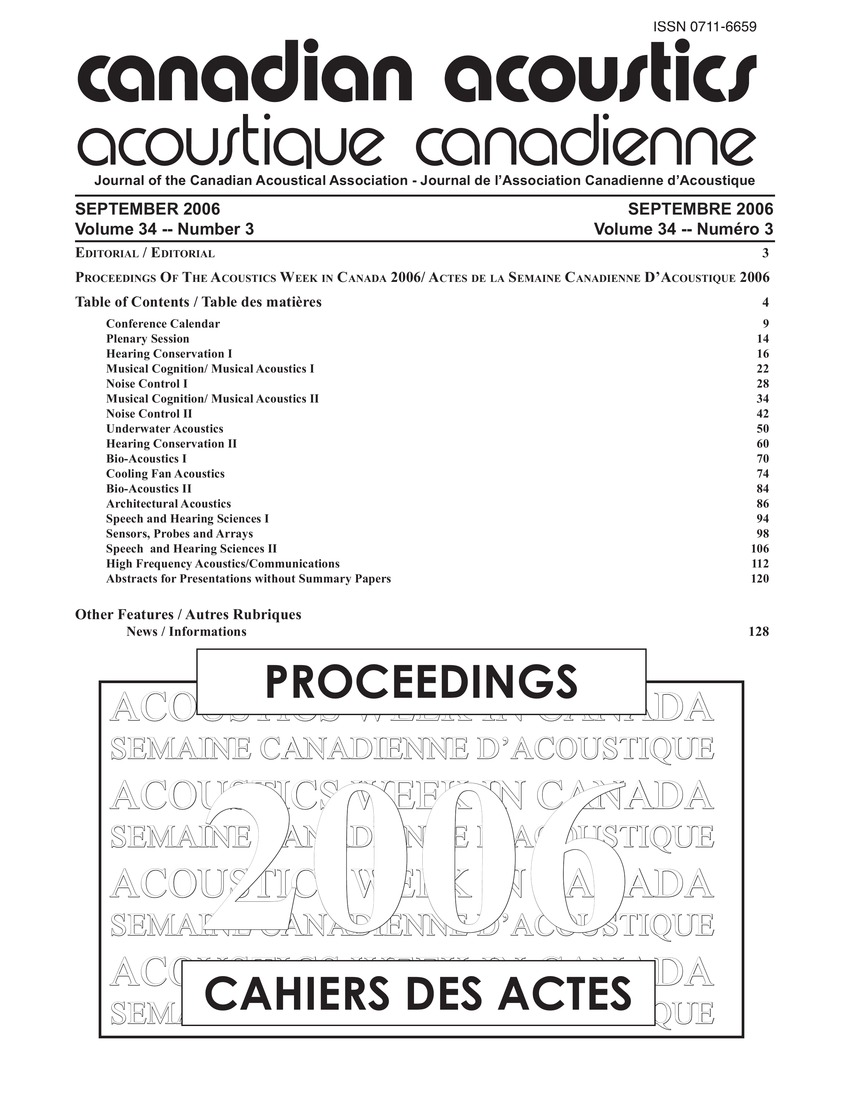The role of formant amplitude in the perception of /i/ and /u/ in normal hearing listeners
Mots-clés :
Amplitude modulation, Harmonic analysis, Sensory perception, Spectrum analysis, Text processing, Formant amplitude, Full-spectrum stimuli, Spectral contrast, Synthetic monophthongsRésumé
The effect of formant amplitude in the perception of vowels for speakers of English in normal hearing, was investigated. Two sets of stimuli including full-spectrum stimuli and incomplete-spectrum stimuli consisted of harmonics at the center of the first five formants were used to determine the perception of /i/ and /u/ in normal hearing. Participants were subjected a forced-choice vowel identification task with two sets of stimuli varied in amplitude of F 2 and F3 in a fully-crossed 7×7 design and identified each stimulus 8 times. It was observed that there were a greater number of /i/ responses in the full-spectrum condition due to reduced spectral contrast while there were more /u/ responses in the incomplete-spectrum condition due to the ability of listeners to perceive F2 at very low amplitudes. Result shows that formant amplitude influence vowel perception in synthetic monophthongs.Fichiers supplémentaires
Publié-e
Comment citer
Numéro
Rubrique
Licence
Author Licensing Addendum
This Licensing Addendum ("Addendum") is entered into between the undersigned Author(s) and Canadian Acoustics journal published by the Canadian Acoustical Association (hereinafter referred to as the "Publisher"). The Author(s) and the Publisher agree as follows:
-
Retained Rights: The Author(s) retain(s) the following rights:
- The right to reproduce, distribute, and publicly display the Work on the Author's personal website or the website of the Author's institution.
- The right to use the Work in the Author's teaching activities and presentations.
- The right to include the Work in a compilation for the Author's personal use, not for sale.
-
Grant of License: The Author(s) grant(s) to the Publisher a worldwide exclusive license to publish, reproduce, distribute, and display the Work in Canadian Acoustics and any other formats and media deemed appropriate by the Publisher.
-
Attribution: The Publisher agrees to include proper attribution to the Author(s) in all publications and reproductions of the Work.
-
No Conflict: This Addendum is intended to be in harmony with, and not in conflict with, the terms and conditions of the original agreement entered into between the Author(s) and the Publisher.
-
Copyright Clause: Copyright on articles is held by the Author(s). The corresponding Author has the right to grant on behalf of all Authors and does grant on behalf of all Authors, a worldwide exclusive license to the Publisher and its licensees in perpetuity, in all forms, formats, and media (whether known now or created in the future), including but not limited to the rights to publish, reproduce, distribute, display, store, translate, create adaptations, reprints, include within collections, and create summaries, extracts, and/or abstracts of the Contribution.


